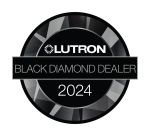German Wine Tasting
Damn, why don’t Americans drink more German wine?!
I just attended the Martignetti German Wine Tasting at Box109 at the Hotel Indigo in Newton and was BLOWN AWAY by the offerings. Almost everything I tasted was above average and the prices were stupidly low. That’s because German wine isn’t popular in the US these days.
The big names in German wine, the VDP-classified wines, are pricey but there’s So Much inexpensive quality wine it boggles the mind.
The main wine of Germany is Riesling, of course. And actually, you could stop there. Not because the others aren’t good but because Riesling is So Good, wines that are beautifully balanced and pair so well with food and wine that are downright sublime. But Germany also makes excellent Pinot Noirs. In fact, I attended a blind tasting of Pinot Noir with Adam Japko, publisher of New England Home magazine, where the favorite Pinot turned out to be a German Spatburgunder (with the dots over the a) brought by #winelover founder Luiz Alberto! In addition to Pinot Noir, there are some other very interesting whites and reds, including the fairly well known Gewurztraminer and the lesser known
Muller-Thurgau, Silvaner and Scheurebe (whites) and Lemberger (red).
A short note on vintages: Great producers make their Rieslings to age. In fact, some can go thirty to forty years! All Rieslings take on a “petrol” nose at about 10 years that wine connoisseurs either love or hate. (I love it.) The 2015 was a rich, elegant vintage. The 2016 was a nervous, minerally vintage. Both are delicious but striking in their difference!
So what did I like? Riesling in every category! Also, some Spatburgunder, Scheurebe and Silvaner.
Every winery was represented by a winemaker. How cool is that? And it was fascinating to hear each of them talk about their wines, the vintages and the micro-climates, ie the differences between Pfalz, Ruwer, Saar, Mosel, etc.
Frank Heyden from the Dr. Heyden winery in Oppenheim was an extremely serious young man, who started picking grapes and opining about when to pick at age 6. Great Rieslings at all levels, including a 1983 Auslese to die for!!! His Spatburgunder was very Burgundian but with verve! The Schneider wines were all excellent. In fact, I rated every one of them “excellent for price.” From the lowly Qualitatswein to the Beerenauslese, they were typical and delicious and made to improve over time. The Fitz-Ritter wines from Bad Durkheim blew me away, including their inexpensive sparkler.
But I think the wines that were overall the best, the most intriguing, were those from Reischgraf Von Kesselstatt. Every wine was precise and fascinatingly low in alcohol, weighing in on average at 10%! That means you can drink a lot more than the average Napa Cab which typically clocks in at 15%!
My top choices, available in the local market and definitely at the shop where I’m the advisor (minimum quantity of 6) are:
White
- 2016 Schneider Hipping Spatlese. So balanced, so representative of great German Riesling (about $18/bottle)
- 2016 Fitz-Ritter Gewurztraminer (a beautiful Gewurtz, GREAT with Indian food), about $20/bottle)
- 2016 Reischgraf Von Kesselstatt Scharzhofberger Spatlese, intense minerality while still beautifully balanced between acidity and sweetness, just a great Riesling. (about $354/bottle)
Red
- 2016 Dr. Heyden Pinot Noir, approximating a cool vintage Burgundy with superb aromatics and Pinot Noir taste but with nervous energy making it great with food (about $17/bottle)
Dessert
- 1983 (yes, you read it right) Oppenheimer Kreuz Auslese, just a perfect example of the lovely aging potential of German Riesling (about %17/bottle, yes you read that right)

